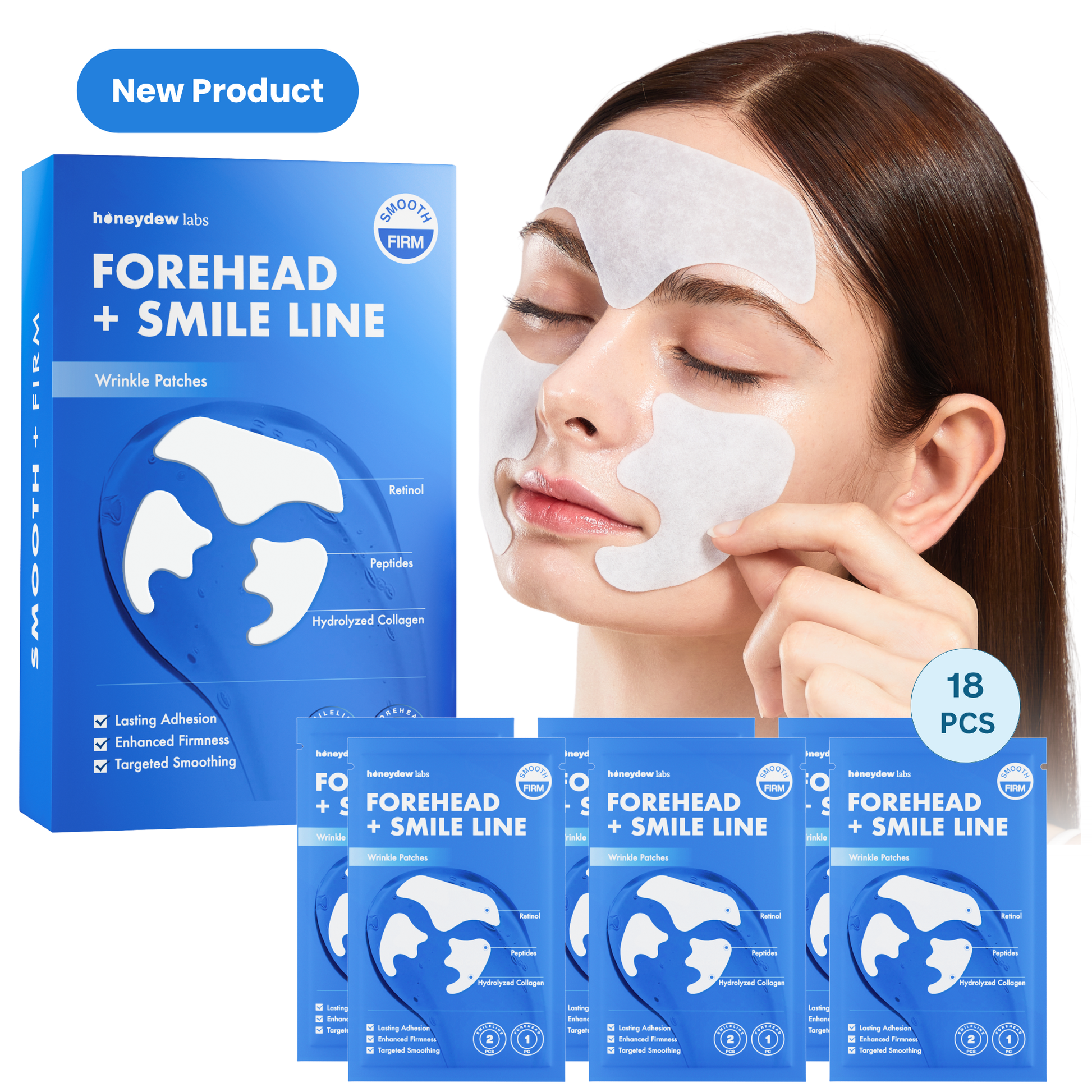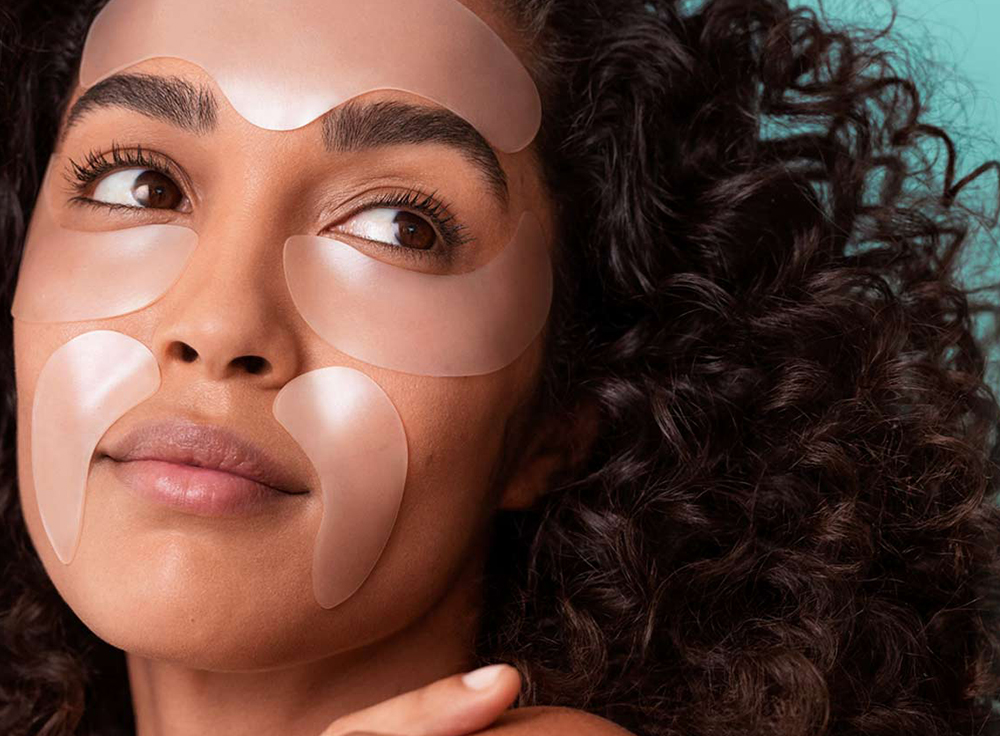Wrinkle patches are everywhere these days—from TikTok skincare routines to celeb IG stories. They promise smoother skin, fewer fine lines, and a quick fix for that furrowed brow or under-eye puff. But... do they actually work? Or are they just another hyped-up beauty trend?
Let’s break it down.

What Are Wrinkle Patches, Exactly?
Wrinkle patches are like little skincare stickers made of hydrogel or silicone that you stick on problem areas (think: forehead, smile lines, under-eyes). They're designed to smooth out the skin while locking in ingredients that target fine lines and wrinkles.
Some work like occlusive shields (just sealing in moisture and flattening out lines), while others—like Honeydew Labs Hydrogel Wrinkle Patches—go the extra mile by delivering real skincare benefits through active ingredients.
So yes, not all patches are created equal.
How Do They Work?
Here's how the magic happens (no fairy dust required):
1. They physically smooth your skin
When you apply a patch, it holds your skin taut. This can temporarily reduce the appearance of fine lines by keeping muscles from contracting—kind of like a very gentle, sticker-version of Botox.
2. They trap moisture
Patches create an occlusive barrier that helps your skin retain hydration—crucial since dry skin can make wrinkles look deeper than they really are.
3. They deliver active ingredients
The best wrinkle patches include ingredients like retinol, peptides, and hyaluronic acid that actually support long-term skin improvement. That’s what makes them more than just a temporary fix.
Are the Results Instant?
Sort of.
You might see smoother, plumper skin after one use—but that’s mostly from the hydration boost and temporary smoothing. Long-term results (like actual wrinkle reduction) come with consistent use and active ingredients.
Think of it like working out: one session gives a quick glow, but the real gains happen with routine.

What Ingredients Should You Look For?
If you're shopping for wrinkle patches, flip that box over and check the ingredient list. Some MVPs to look out for:
-
Retinol – Speeds up skin cell turnover and boosts collagen (Gold & Roberts, 2020).
-
Acetyl Hexapeptide-8 (Argireline) – Known as “Botox in a bottle” for its muscle-relaxing properties (Lupo, 2021).
-
Niacinamide – Brightens skin and improves texture (Lee & Kim, 2019).
-
Sodium Hyaluronate – Deep hydration that keeps skin bouncy and plump.
What About Under-Eye Patches?
Under-eye wrinkle patches are especially popular—and yes, they work on the same principle: hydrate, protect, deliver actives. Just make sure they’re gentle enough for that thin, delicate skin. (Centella Asiatica and panthenol are great ingredients to look for.)
Are Wrinkle Patches Safe?
In general, yes—but check the label.
⚠️ If your patches contain retinol, avoid them if you’re pregnant, breastfeeding, or have very sensitive skin unless your doctor says otherwise.
Patch test first, especially if you have allergies or reactive skin.
Wrinkle Patches: Gimmick or Game-Changer?
Here's the real talk:
-
✅ They can help smooth lines temporarily.
-
✅ They can deliver ingredients that improve skin over time.
-
❌ But no, they won’t replace fillers or medical-grade treatments.
If you’re expecting a miracle overnight, you’ll be disappointed. But if you want a non-invasive, feel-good, and skin-plumping addition to your routine? Wrinkle patches are absolutely worth it.
Final Thoughts
Whether you’re prepping for a night out or looking to slowly but surely fade those fine lines, wrinkle patches can help—as long as they’re made with the right ingredients.
And if you're looking for a formula that’s backed by science (and loved by thousands), check out our Honeydew Labs Hydrogel Wrinkle Patches—available now on Amazon USA and Canada.
Disclaimer
This article is for informational purposes only and does not constitute medical advice. Always consult a dermatologist before starting new skincare products, especially if you have sensitive skin or are pregnant.
References
Gold, M. H., & Roberts, B. (2020). Retinol and its impact on collagen production: A clinical review. Dermatological Advances, 18(2), 23–37.
Lee, J., & Kim, S. (2019). The effects of niacinamide on hyperpigmentation and skin barrier function. International Journal of Cosmetic Science, 14(4), 67–82.
Lupo, M. P. (2021). The role of peptides and growth factors in anti-aging skincare. Journal of Clinical Dermatology, 12(3), 45–58.

